From Reactivity to Creativity
Most humans live in a state of stress about 70% of the time. Stress is a state of mental or emotional tension in the face of demanding or adverse circumstances, in which we feel we cannot control the situation or we cannot predict the outcome. Being in stress means being in a state of reactivity. This is survival mode.
In survival mode, we feel we need to respond to a perceived threat. It is the old tiger story: if you encounter a tiger, you definitely want to outrun it! It is about reacting —and fast! No time to be creative on the best way to outrun the tiger.
So, this survival mode is useful. Very useful! As long as we don’t keep it on even when it is not needed.
When do we turn it off? The answer is when there is no tiger! For instance, when we’re just having an interaction with our significant other or our boss — even though it might feel like a tiger— and we might feel like the stakes are high, is it really necessary to turn the alarm system on?
How can we develop the ability to act rather than react? How do we develop the ability to slow down to be able to see if indeed we are facing a tiger? First of all, we need to reset. We need to regulate.
But before we can regulate, we need to notice that we’re being pulled into habitual reactivity. The simplest and most practical model to regulate into coherence is PRO. The PRO model guides us to pause, relax, and open.
First…
Pause. When we develop a practice of pausing frequently, we are strengthening our ability to be an impartial observer. Being an impartial observer, it is easier to be in control as we decrease the possibility of habitual reactions.
Second…
Rest. When we relax, we promote mental, physical, physiological, and emotional coherence. In coherence there is a sense of synchronization and order. We are tuning into rhythm.
Third…
Open. We open and things open up for us. In coherence, we free up energy for higher intelligence and we tap into a greater level of awareness. We are capable of making better decisions and open/notice beyond the perceived conditions in the environment.
My invitation is to change. You’d say that we’re constantly invited to change. I agree. However, rather than seeing change as an effort to become someone we’re not, the invitation is to PRO into who we really are and what the situation really is.
PRO is a practical tool that can help us be in present moment awareness. This can be very disorienting and frightening as it puts us in the unknown.
Habitual reaction is familiar, comfortable, and known territory.
Real change means moving the “C” of change from reaCtivity to Creativity.
How can we know what we don’t know? If we keep doing what we’ve done until now, habitual reaction, we will keep getting the same results. All this is known —a familiar past and a predictable future. Present moment awareness opens up possibility beyond the perceived conditions in the environment. In other words, possibility is not limited by our perceived limitations.
When we let go of habitual reactions and remain at the threshold between the known and unknown, at the place where we are called back into the familiar because we’re terrified and disoriented, we are interrupting a pattern and creating a new one. Even if the first time we do it we feel as if we didn’t do anything at all! That’s one step less we take into the predictable future. That’s a win! That’s creativity. Step by step, we cross the threshold and make the newly found territory into the new known.
What is your next move to change the “C” in reactivity to creativity?
I’m sure you can do it like a PRO!

